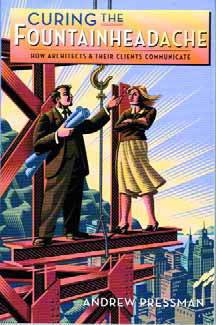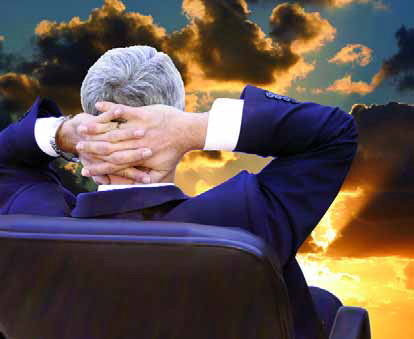client relationships
When I teach seminars on watershape design, I always emphasize the importance of having a list of questions to ask prospective clients during initial conversations. It's a point that always seems to ignite discussion - and it usually ends up with someone in the audience asking me to provide such a document for general use. I always refuse to do so, not because I consider my approach a trade secret, but rather because everyone's business and approach to clients is a little different and the questions I ask might not be exactly the questions everyone else would (or should) ask. The issue has come up frequently enough through the years, however, that I've finally assembled
When it comes to design in the watershaping industry, I see all of us who creatively put pencils to paper as being in states of transition - particularly where I live in the pool/spa realm, where design has traditionally been used as a sales tool and charging for design work was largely unheard of as a service above and beyond construction. All that is changing - and for the better, I think. But with more and more of us gravitating in the direction of professional design consulting either within companies or on our own, what's to guide us as we reach toward that goal? A book I've just read may be a big help: Andrew Pressman's Curing the Fountainhead Ache: How Architects and Their Clients Communicate (Sterling Publishing Co., 2006) has led me to recognize that good design is mostly about establishing effective dialogue with clients. Indeed, he has convinced me that the way I talk to my clients - and, as important, how well I listen to what they have to say in return - has everything to do with
When it comes to design in the watershaping industry, I see all of us who creatively put pencils to paper as being in states of transition - particularly where I live in the pool/spa realm, where design has traditionally been used as a sales tool and charging for design work was largely unheard of as a service above and beyond construction. All that is changing - and for the better, I think. But with more and more of us gravitating in the direction of professional design consulting either within companies or on our own, what's to guide us as we reach toward that goal? A book I've just read may be a big help: Andrew Pressman's Curing the Fountainhead Ache: How Architects and Their Clients Communicate (Sterling Publishing Co., 2006) has led me to recognize that good design is mostly about establishing effective dialogue with clients. Indeed, he has convinced me that the way I talk to my clients - and, as important, how well I listen to what they have to say in return - has everything to do with
Through the years in these pages and elsewhere, I've been a persistent critic of the shortcomings of the watershaping trades in general - and especially of the pool and spa industry in which I've operated for more than 25 years. Sometimes I've been harsher than others, but my intent has invariably been to define the difference between quality work that elevates the trade and the junk that's held back our industry's reputation. I've never named names, but I've been particularly hard on practitioners who seem eternally stuck in old ways of thinking and working: Their work seldom lines up with the best efforts of which the industry is capable. Just recently, I had a long talk with WaterShapes' editor in which we discussed the development of a new approach to
Through the years in these pages and elsewhere, I've been a persistent critic of the shortcomings of the watershaping trades in general - and especially of the pool and spa industry in which I've operated for more than 25 years. Sometimes I've been harsher than others, but my intent has invariably been to define the difference between quality work that elevates the trade and the junk that's held back our industry's reputation. I've never named names, but I've been particularly hard on practitioners who seem eternally stuck in old ways of thinking and working: Their work seldom lines up with the best efforts of which the industry is capable. Just recently, I had a long talk with WaterShapes' editor in which we discussed the development of a new approach to
Every year, it seems, I'm asked to teach more and more classes on how to build streams, waterfalls and ponds that look natural. I enjoy conducting these sessions for local supply houses, landscape architecture firms, community colleges and other organizations and find it flattering that they value what I know. My motivation for sharing, however, is less about ego gratification than it is about my awareness that there's no way a single company can build all of the naturalistic watershapes consumers want these days. To me, it's a matter of collective as well as personal interest that these watershapes be built to function well and look great. In Colorado in particular, I also see a need for work that appears completely and distinctly natural, simply because most clients here are accustomed to seeing remarkable beauty in the countless alpine settings that grace this beautiful state. Indeed, it's a fact of professional life here that the work must mimic nature closely or it just won't fly. That can be very good for business, of course, but only if more than a few professionals hereabouts are up to the challenge. Available projects range from those that use thousands of
When I paint, I constantly play with color on canvas and experiment with various combinations to see what works well and discover what, to my eye, clashes or doesn't seem to mix harmoniously. As a landscape designer, I'm aware of working through the same sort of process when I discuss color with clients - determining their likes and dislikes and narrowing the color palette down to those hues, values and intensities that are most appealing to them. Some aren't even aware until I launch into a discussion with them that they have particular tastes involving the color wheel. In my experience, all these clients lean
For many years, I sat on the sidelines and watched others learn to use CAD to their professional advantage. I'm a fine artist by background and training and have always had great confidence in my ability to draw freehand. But I also yearned to become proficient with computers because I was convinced they'd streamline my work, offer me additional tools that would facilitate expansion of my business and, overall, make me a better landscape architect. I was completely
When someone calls and asks you to "landscape my home," what does it mean? Are you going over to put plants and trees in the ground, or will you be rolling in with backhoes to install a pond? This initial uncertainty is why, before any project begins in earnest, there are questions to be asked. It's also why there are measurements to be taken, elevations to be shot, sketches and more sketches to be drawn, meetings to schedule and plans to present. Then, maybe, a working design will develop and then, maybe, construction will start. Gathering information and doing the foundation work on a design takes research, patience, experience and time, and it's never




















